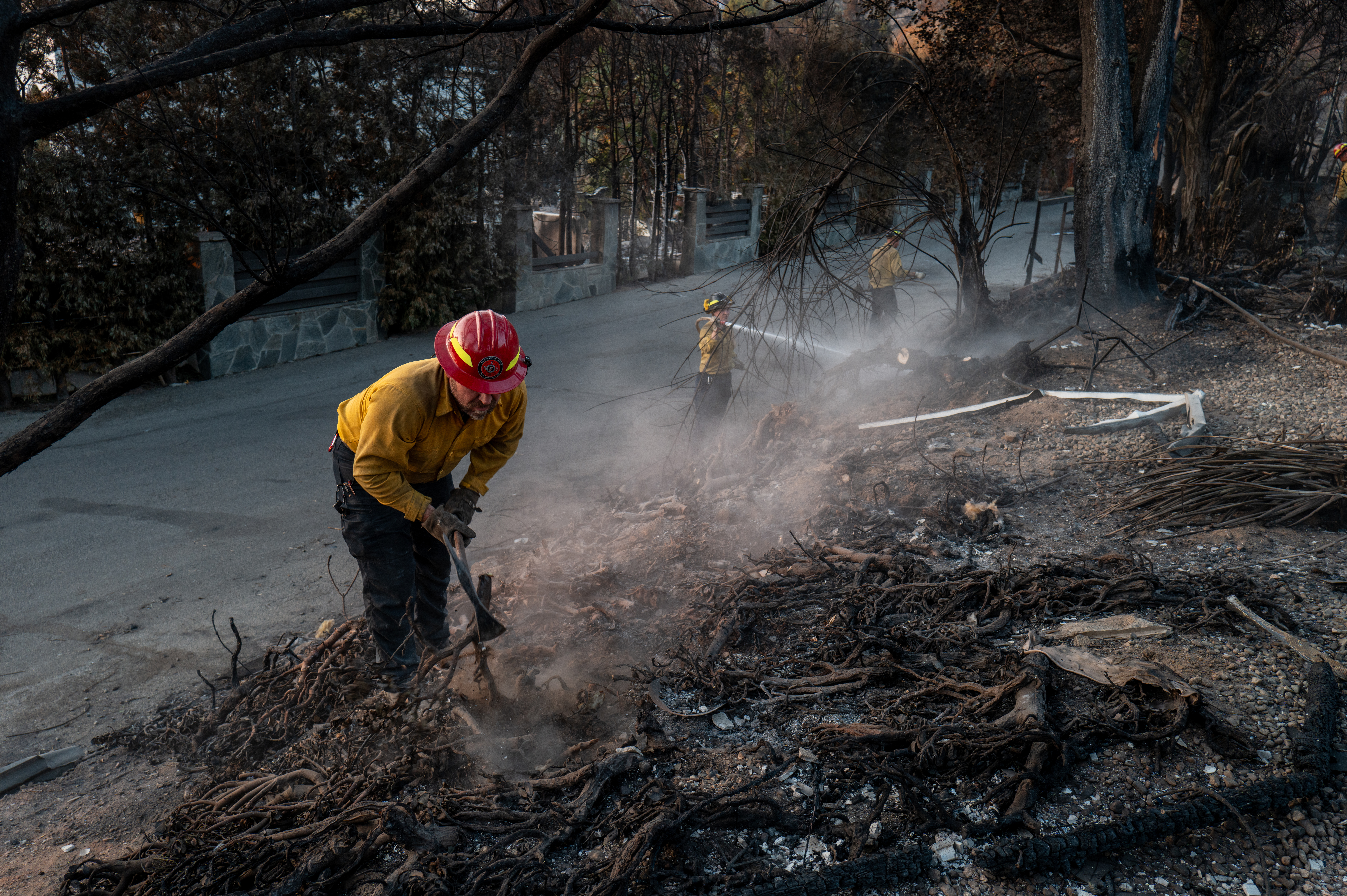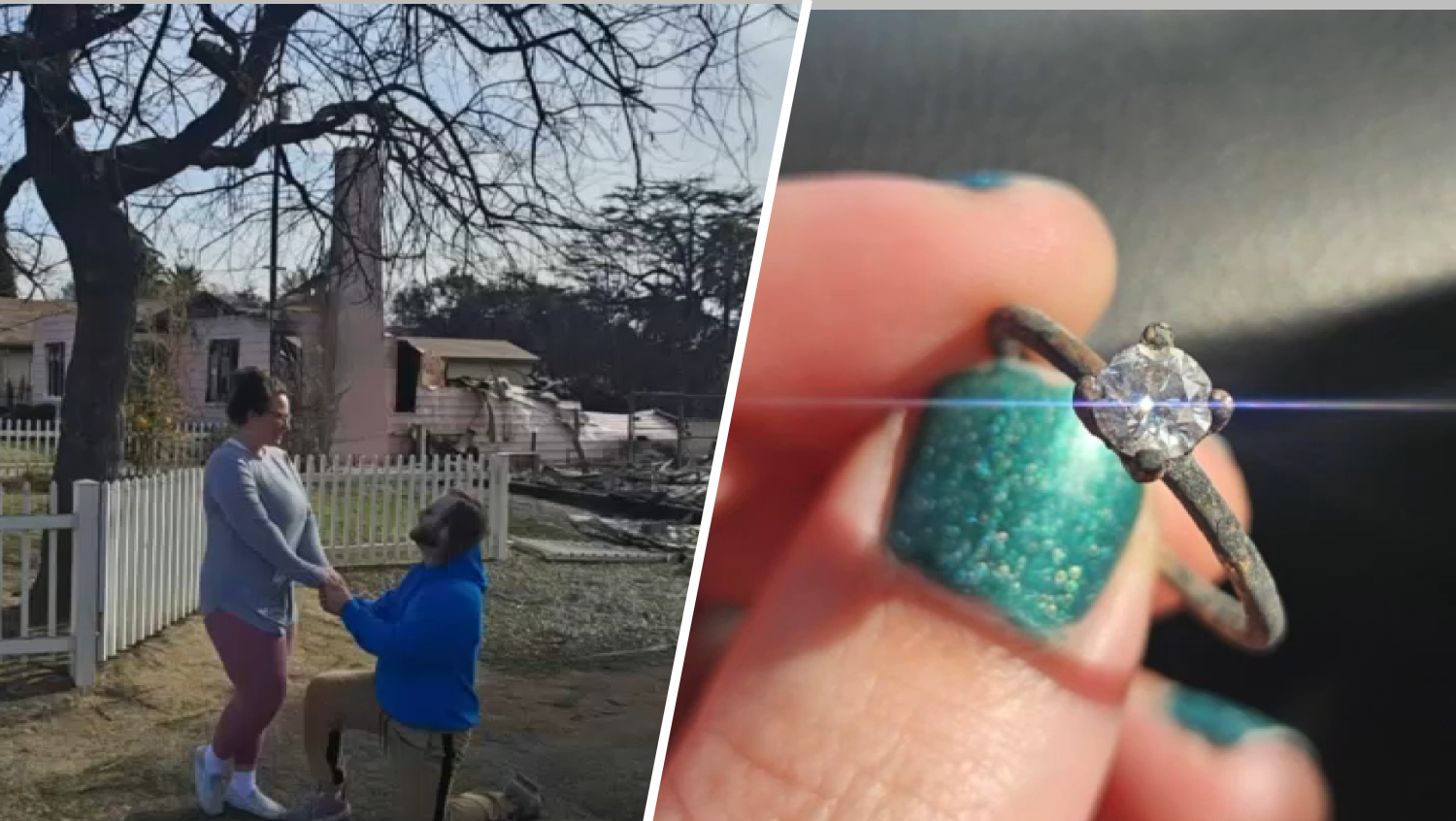Residents in Azusa are concerned about a local site being used as a toxic waste site following the Eaton Fire. Lauren Coronado reports for the NBC4 News at 6 a.m. on Jan. 29, 2025.
Starting Tuesday, residents whose homes were damaged or destroyed in the Los Angeles County wildfires can opt in to have the U.S. Army Corps of Engineers clear debris from their properties for free.
The wildfires debris removal process is in Phase 1, which involves clearing hazardous materials from properties by the U.S. Environmental Protection Agency. Once the EPA finishes its work and the property is considered safe, the Corps of Engineers can remove the debris from properties whose owners opt-in to the free removal program under Phase 2.
Residents also can also opt out of the program and hire their own contractors.
Get top local stories in Southern California delivered to you every morning. Sign up for NBC LA's News Headlines newsletter.
Starting Tuesday, residents can fill out Right of Entry forms to opt in or out of the clearance program.
The Los Angeles County Department of Public Works is coordinating the debris-removal process in conjunction with the EPA and Army Corps of Engineers.
The process was a point of discussion Friday when President Trump toured the Palisades Fire burn area. At a meeting following the tour, Trump said residents should be allowed to immediately access their properties to clear debris. EPA officials insist that household hazardous wastes, such as oils, paints, lithium-ion batteries, pesticides and propane tanks present a danger to returning residents, particularly if their containers were damaged in the fire.
Final evacuation orders were lifted Monday for the Palisades Fire on the LA County coast. Both the Palisades Fire and Eaton Fire northeast of Altadena are nearing 100-percent containment three weeks after they started in a Santa Ana windstorm.
Questions were raised over the timeline for Phase 1 completion. Gov. Gavin Newsom said Tuesday that the state and the Federal Emergency Management Agency have sent a letter to the EPA calling for the Phase 1 hazardous materials work to be completed within 30 days, not the original 60 days that was estimated.
"The state has offered unprecedented resources," Newsom said during a news conference at Dodger Stadium. "I still have 1,971 National Guard (troops) down here. We will do whatever it takes to provide that support for the EPA. They've been provided with $175 million, and they need to get it done -- pursuant not only to the direction of FEMA, but the direction of the president of the United States himself, who wants to move heaven and Earth to make sure that happens sooner. So the debris removal Phase 1 we want done in the next 30 days."
Newsom said the Phase 2 debris removal program will not have to wait until the EPA's work is completely done. He said as individual properties are cleared, once residents complete the Right of Entry form, "they can do debris removal for themselves by a contractor or they can get the support from the Army Corps."
"Once the debris is removed in Phase 2, it goes up on a website and then the building permit process begins, so all this happens stacked on top of each other," he said. "It's not Phase 1, then we begin Phase 2, (then after) Phase 2 we begin rebuilding. It all happens in real time."
In a news release issued Tuesday, the EPA said an executive order issued by President Trump directs the agency to "complete its hazardous materials mission responding to the Los Angeles, California Wildfires as soon as practical."
The agency will have upwards of 1,000 people working on Phase 1 cleanup, a required process to ensure the safety of property owners and those working at the site, the news release said.
"Under President Trump’s leadership, EPA is doing everything within our power to expedite cleanup of hazardous debris and to help provide Californians safer access to their property as soon as possible," said EPA Acting Deputy Administrator Chad McIntosh. "With President Trump’s Executive Order, he has authorized a whole of government response to the catastrophic wildfires in Los Angeles — an effort that has never been seen before. EPA is working with local, state and federal partners in addition to the private sector to aid in California’s recovery."



